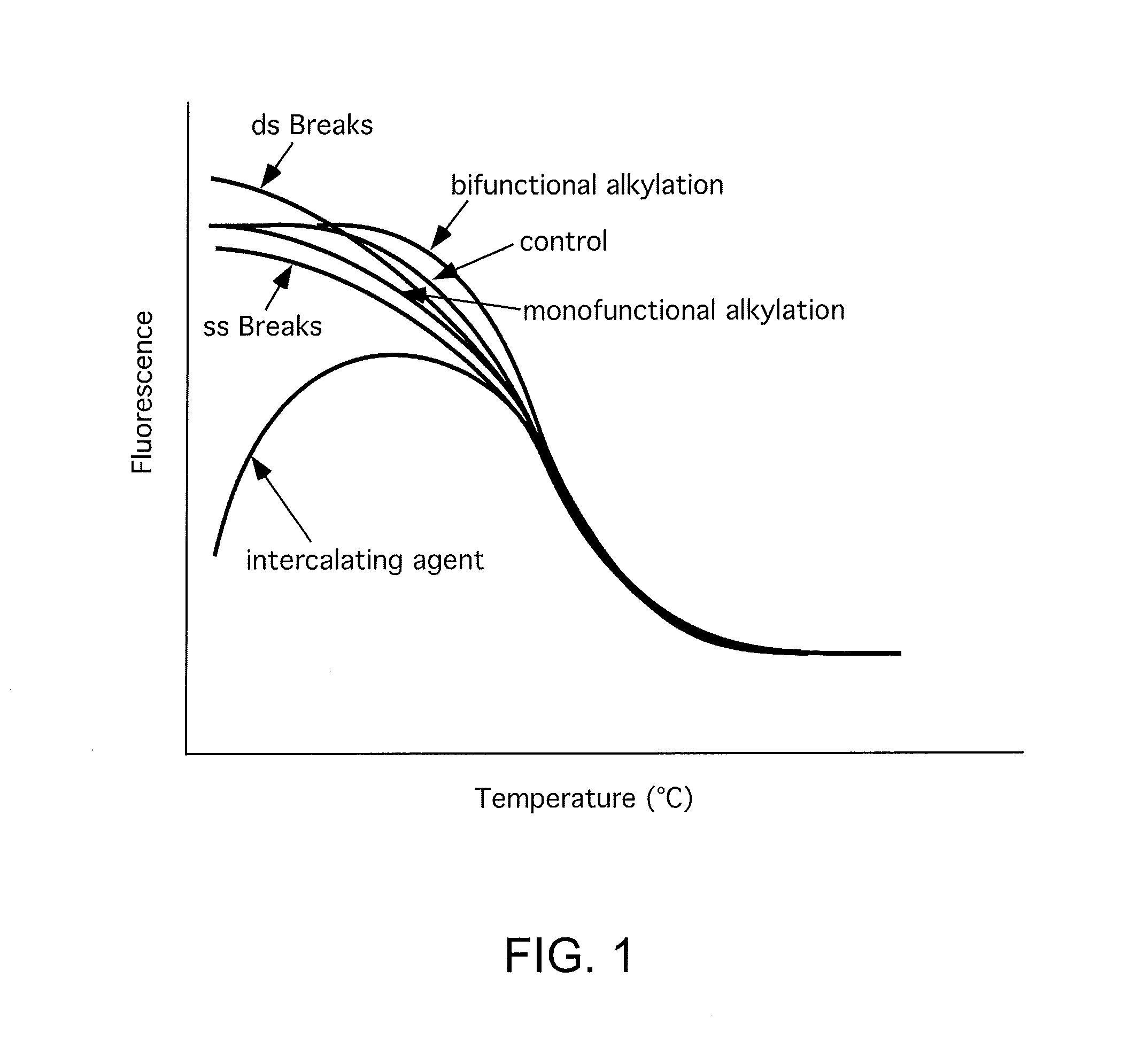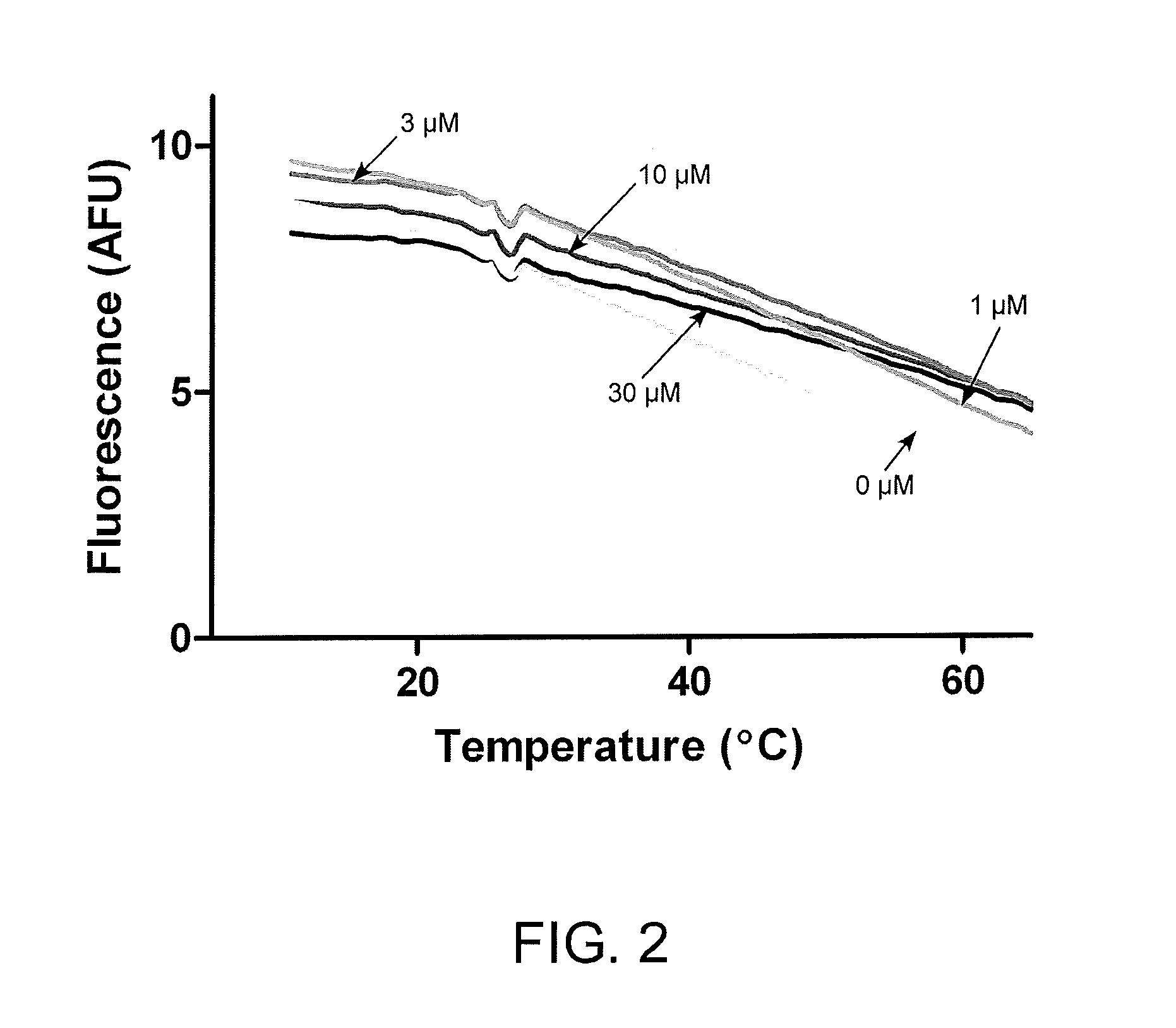Sensitive high throughput method for DNA damage and repair
a high throughput, sensitive technology, applied in the field of high throughput screening of genotoxicants, can solve the problems of false positive and false negative tests, large differences in nucleotide base damage, and extremely low throughput in determining genotoxicity
- Summary
- Abstract
- Description
- Claims
- Application Information
AI Technical Summary
Benefits of technology
Problems solved by technology
Method used
Image
Examples
example
[0051]Several pharmacologically important genotoxicants are known to exist. Many of these genotoxicants are used as antineoplastic and antiproliferative therapeutics, and are prescribed as chemotherapeutics and antibiotics. However, not all chemotherapeutic and antibiotic treatments exert their effects through a genotoxic mechanism. Thus, testing a genotoxicity assay against known antineoplastic and antiproliferative pharmacologic agents represents a useful proof-of-concept.
[0052]The ability to detect DNA-damaging agents was first examined under conditions under which only the pharmaceutical agent was allowed to interact with the dsDNA. FIGS. 2-5 show examples of the effects of chemicals that modify DNA on DNA melting profiles.
[0053]FIG. 2 shows the effect of phenanthrenequinone on DNA melting curves. dsDNA (1,000 ng / ml), treated with increasing concentrations of the alkylating agent phenanthrenequinone, was incubated with PicoGreen and the rhodamine ROX reference dye. Samples were ...
PUM
| Property | Measurement | Unit |
|---|---|---|
| concentrations | aaaaa | aaaaa |
| temperature | aaaaa | aaaaa |
| volume | aaaaa | aaaaa |
Abstract
Description
Claims
Application Information
 Login to View More
Login to View More - R&D
- Intellectual Property
- Life Sciences
- Materials
- Tech Scout
- Unparalleled Data Quality
- Higher Quality Content
- 60% Fewer Hallucinations
Browse by: Latest US Patents, China's latest patents, Technical Efficacy Thesaurus, Application Domain, Technology Topic, Popular Technical Reports.
© 2025 PatSnap. All rights reserved.Legal|Privacy policy|Modern Slavery Act Transparency Statement|Sitemap|About US| Contact US: help@patsnap.com



